Children with Sensory Processing Disorder are often misdiagnosed as well as misunderstood. It can be a struggle for children with SPD to get through an average day. Occupational therapy has been proven to be a very useful tool for these children. Along with occupational therapy, yoga can be helpful, especially when incorporating several YoGalore techniques. These techniques, activities and poses (especially when practiced consistently) can improve children’s ability to process as well as provide tools for calming and relaxing when these children encounter a situation that is stressful to them.
Sensory Processing Disorder (SPD) is “the inability to use information received through the senses in order to function smoothly in daily life” (Kranowitz, 9). When a child has SPD, they cannot respond consistently or appropriately to sensory messages sent to the brain. Children with SPD tend to fall in any of the following three categories: over-responsive, under-responsive, or sensory-seeking. For example some children cannot tolerate certain textures of clothing or food or even light touches. What feels “light” to us, feels much more harsh and abrasive to a child who is over-responsive. There are varying degrees of SPD and a vast array of issues that associated with these disorders, which is why sometimes it is very difficult to have a child diagnosed or evaluated. Many times these children are labeled “difficult”, or even perceived to have mild to severe behavioral problems, when in reality, they just need to be understood and receive services such as occupational therapy or even physical therapy in some cases. It is quite common for children not to be diagnosed until they are well into elementary school or even middle school. The earlier a child can be evaluated, receive services and have all of his teachers, parents and caregivers on the same page, the greater the chances for a successful outcome at an earlier age.
Treatment helps the child properly process all the senses, allowing them to work together. “When the child actively engages in meaningful activities that provide the intensity, duration, and quality of sensation his central nervous system craves, his adaptive behavior improves. Adaptive behavior leads to better sensory processing,” (Kranowitz, 48). Without treatment, children will inevitably struggle. Children do not “grow out of” SPD.
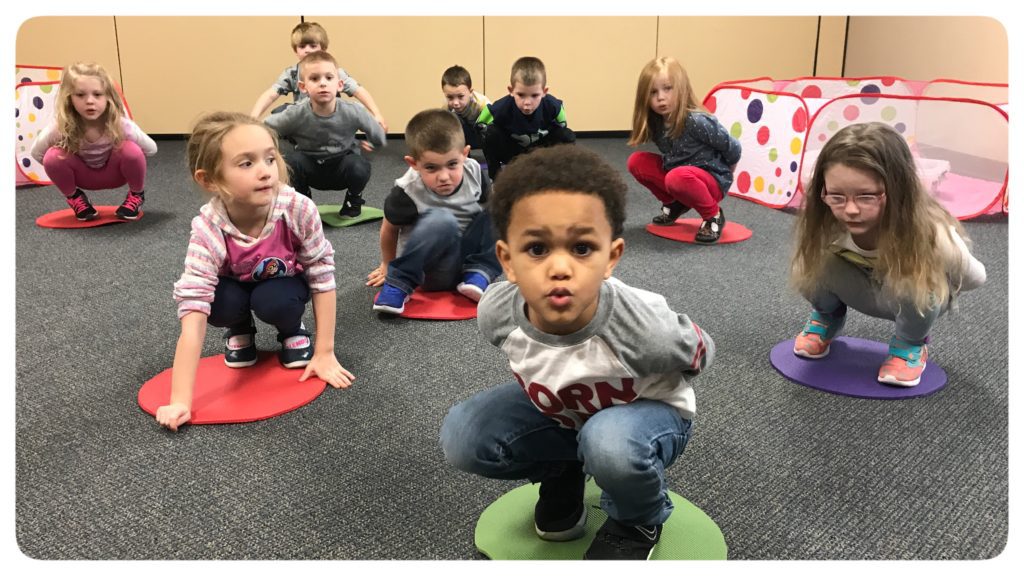
Children with SPD often experience obsessive compulsive tendencies, anxiety and even panic in trying to function in the world around them. Often they need things a very specific way – their way, whatever that may be. This can mean anything from eating oatmeal for breakfast every single day to only wearing shirts with long sleeves, in on the hottest of days. When their lives deviate in the smallest of ways, SPD children can fall apart, causing them stress and anxiety that they do not know how to manage. Yoga provides these children with relief – a way for them to take control, take ownership of their feelings and their ability to cope without assistance. Teaching these children yoga breathing techniques allows them to learn to relax and calm themselves. Poses such as child’s pose allows them to feel the stillness and calm of their own bodies.
At the same time, some children are under-responsive, needing more stimuli for them to experience a sensation. Perhaps they need their clothes to fit tightly for them to have body awareness. They may need an extra tight “bear hug” to feel they are being hugged at all. These children need to be energized. They need activities and movement that will wake up their little bodies. Sun salutations and poses like camel pose wake the body up and say, “Hey! I feel that!”
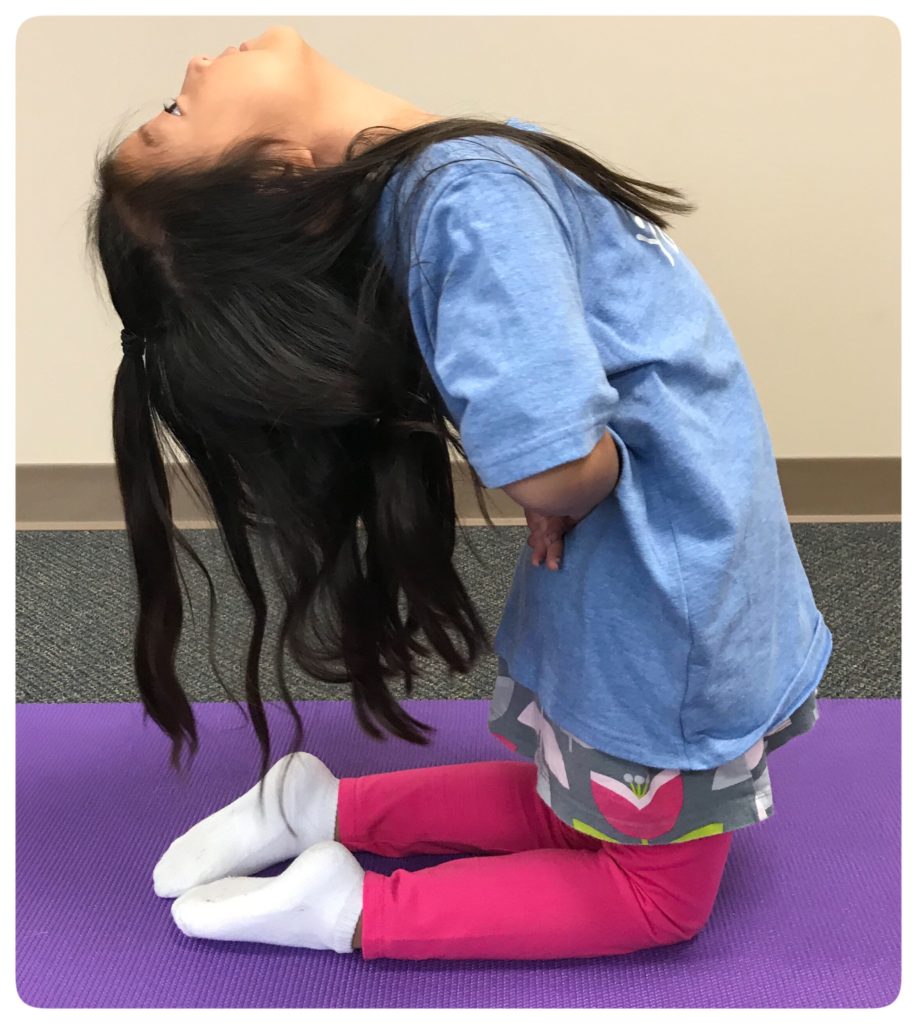
I worked at a facility here in Kentucky — a residential facility for people with a wide range of various disabilities. I have a student, Pamela, who is 22-years-old. She has the emotional and intellectual development of an eight or nine-year-old child. She watches the Disney Channel faithfully and loves Miley Cyrus. Pamela is under-responsive, often choosing to wear gloves in warm weather and always wears socks. She also suffers from extreme anxiety and anger issues and sees a psychologist regularly. She takes my class three times a week and has been doing so since mid-January. I met Pamela’s mother about a month ago and she shared with me what a difference she has seen in Pamela in the short time she has been taking yoga. Pamela and her mother dropped by my class just to say “hello” and it was during savasana.
While I was speaking with her mother, Pamela went in and sat down in a chair and relaxed with the other students who were on the floor. Her mother said, “I could tell a difference in Pamela the second she walked in the room. She’s calmer and less anxious. I am so happy I enrolled her in your class.” One of Pamela’s teachers told me two days ago that Pamela shared with her psychologist that she “loves yoga”. The psychologist recommended Pamela begin private yoga lessons because of her dramatic progress in group lessons. Pamela is now able to calm herself (using breathing techniques) and does yoga alone in her room. Pamela is just one of my students that has touched my heart.
For children with SPD, yoga can increase body awareness and muscle tone. It can improve balance, bilateral coordination, motor-planning, and both fine and gross motor skills. In addition to all the physical and physiological benefits, YoGalore teaches children to learn and play through movement and sensory play. Movement play “lights up the brain and fosters learning, innovation, flexibility, adaptability, and resilience,” (Brown, 84). Dr. Brown further explains that, “All of the patterns that induce states of play are present and remain important for growth, flexibility, and learning,” (Brown, 99).
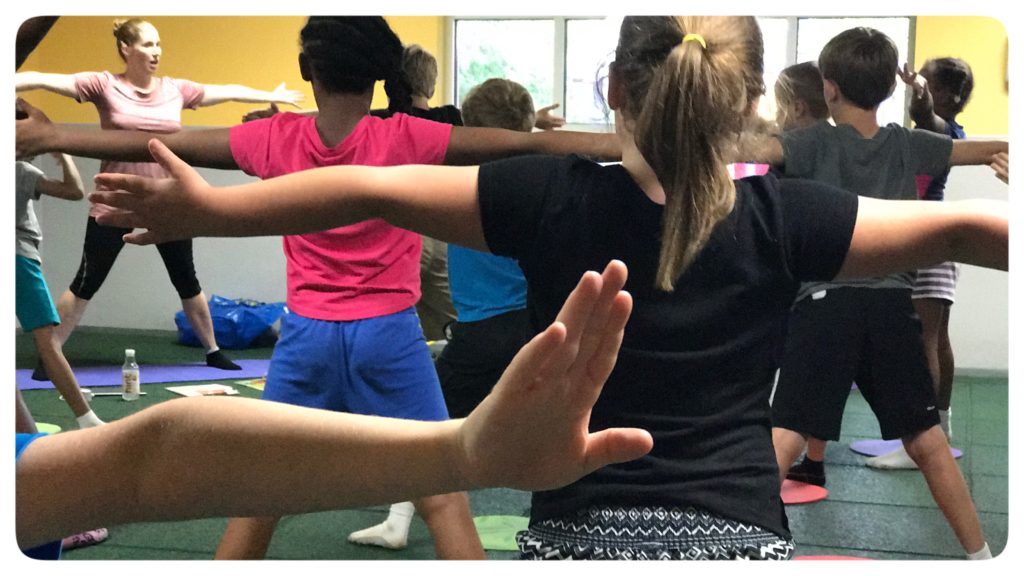
In conclusion, yoga helps all children in a variety of ways, but especially those children who suffer from SPD. Using YoGalore techniques teaches children how to better self-regulate and ease the anxiety they experience on a daily basis caused by their disorder. By incorporating YoGalore breaths, poses and activities, these children can also learn to better process the information they receive from their senses and will be more capable of adapting to the world around them.
Bibliography
Brown M.D., Stuart. Play. London: Penguin, 2009. Print.
Kranowitz, M.A., Carol Stock. The Out-of-Sync Child. New York: 2005. Print.

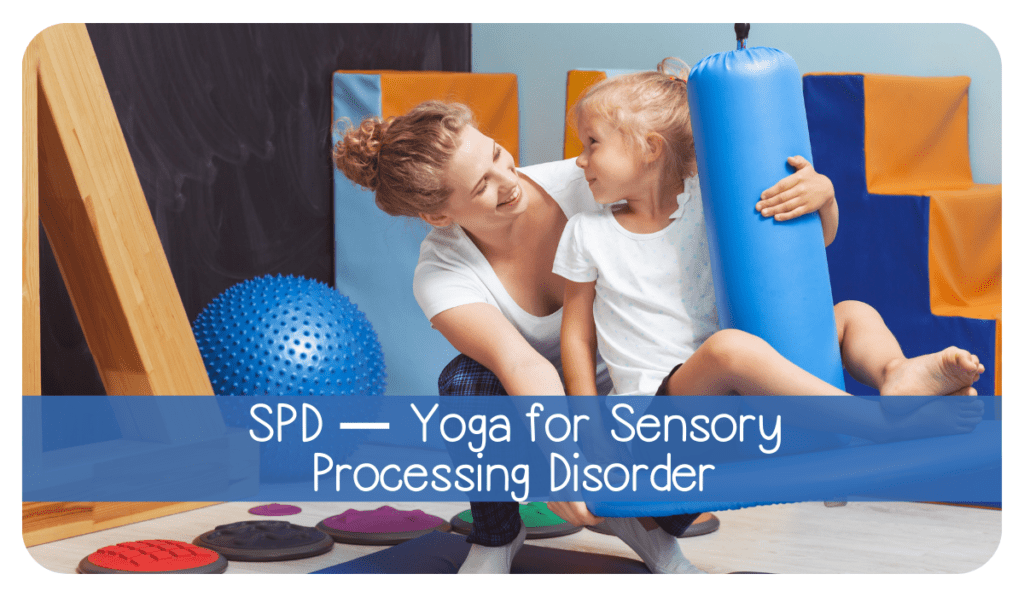
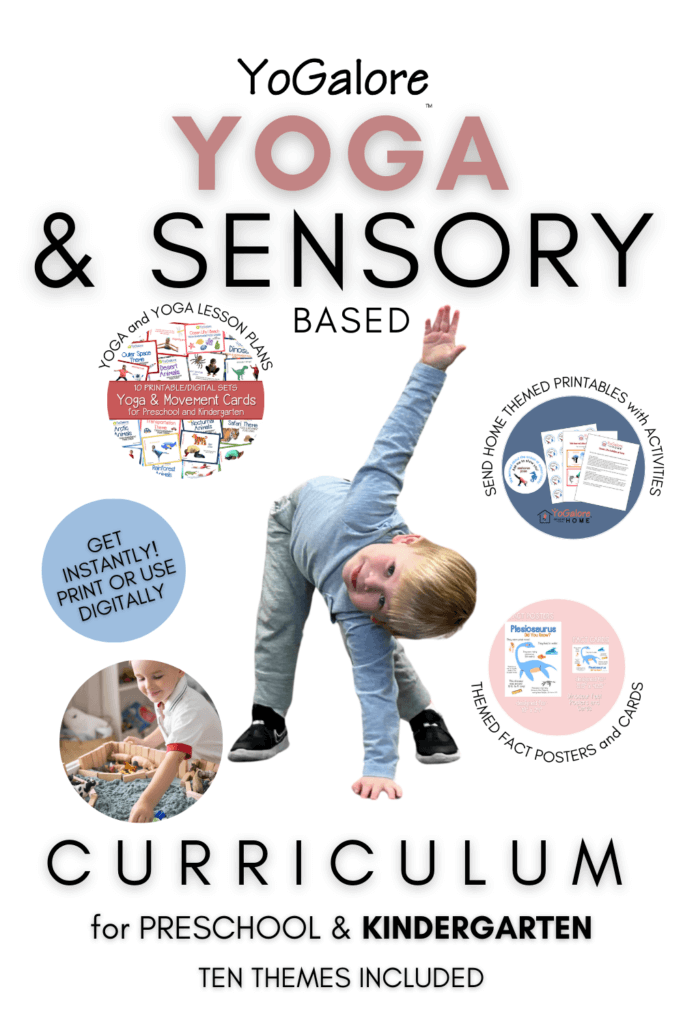


2 Responses